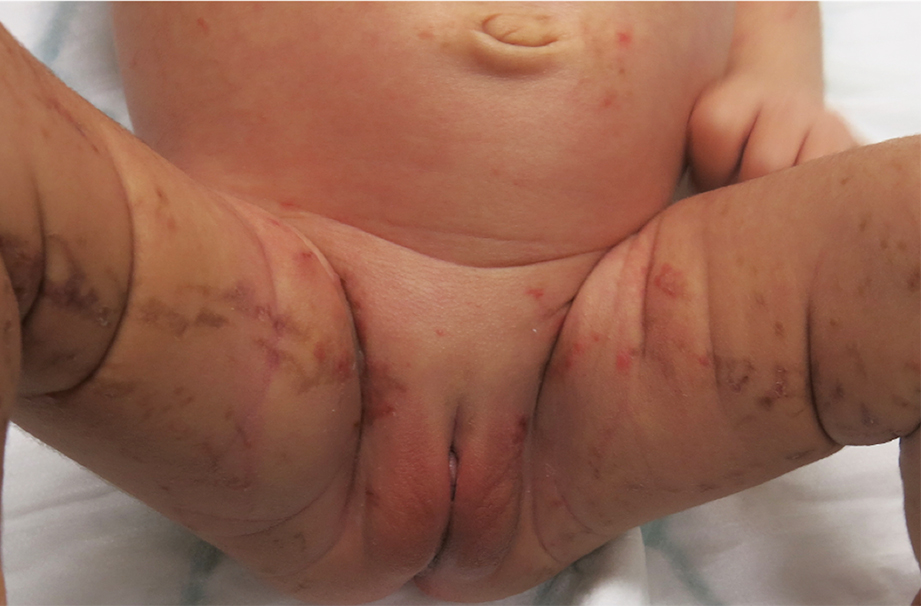Incontinentia pigmenti with exudative And pigmentary lesions in the neonatal period.

Downloads
DOI:
https://doi.org/10.26326/2281-9649.32.4.2375How to Cite
Abstract
Incontinentia pigmenti (IP), also known as Bloch-Sulzberger syndrome, is a rare, complex, multisystem ectodermal dysplasia transmitted with a dominant X-linked trait. It is probably lethal in males, but females survive by random inactivation of the X chromosome (8). The estimated incidence is 0.7 cases per 100,000 births (1).
IP is caused by mutations in the IKBKG gene (essential modulator of NF-kappaB, formerly known as NEMO), which regulates the expression of numerous genes that control immune and stress responses, inflammatory reaction, adhesion and cell apoptosis (1-3).
IP is characterized by four successive and often partially overlapping skin stages, namely vesicobullous, warty, hyperpigmented and atrophic. Atrophic lesions represent the only marker of IP in adulthood […].
